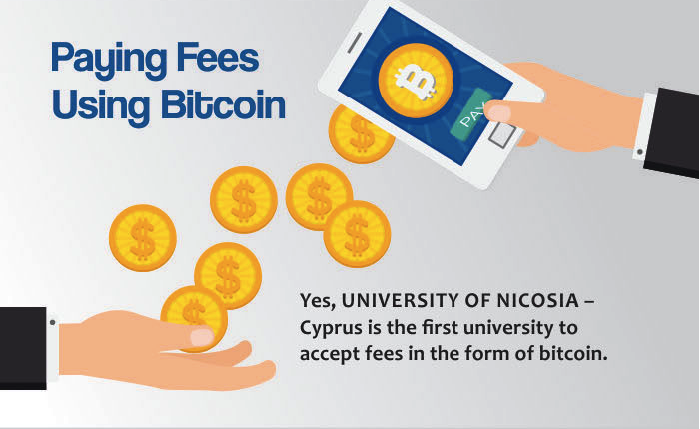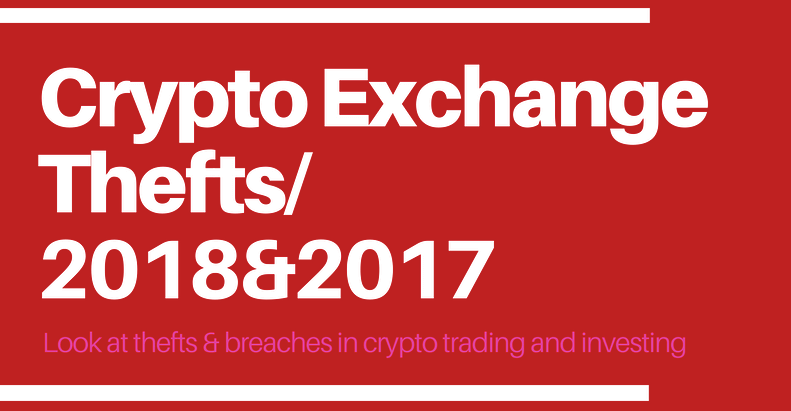You are reading about: "Smart Contracts, Decentralization and Transaction Throughput of Smart-Economy Platforms"
Ethereum might be the gold standard of smart contracts, it is widely known though that in terms of transaction throughput this particular blockchain is severely lacking.
That does not make it a mistake that most utility tokens are based on the Ethereum blockchain. For most cases, a throughput of 5-15 transactions per second is enough. At worst, it can result in a few seconds of inconvenience for the transacting parties.
Nonetheless, as blockchain technology became a tool widely explored by large established institutions, a market for high-throughput distributed ledgers was created.
In this article we are comparing three of them - NEO, EOS and Tera.
NEO
NEO came to prominence in 2017, but it is in fact a 2014 project called Antshares that was rebranded. NEO is China’s first original open source public blockchain project. Its focus is to become the full stack for smart economy, supporting smart contracts and digital identity.
As for the smart contracts, the improvement from what Ethereum does was mainly for convenience - NEO supports contracts written in most high-level programming languages, there is no need to learn a new skill in order to start developing.
A major difference is the maximum transaction throughput: NEO can make up to 10k transactions per second thanks to its algorithm optimizations. On top of that, NEO has a host of hard-coded features like a cross chain protocol for communication with other blockchains or a file sharing service based on the IPFS.
That all sounds very attractive. However, even now, NEO still operates in the mode of “decentralization someday”: Bitcoin and Ethereum have over 30k globally distributed network nodes between them, the amount of official NEO nodes is literally only a handful.
So far, NEO has failed to get any significant worldwide adoption aside from price speculation. Moreover, the way NEO handles digital identities could lead in censorship in the future.
While for institutions like Weiss Ratings this is not of much importance as the chief metric seems to be future potential, it is very much a critical concern for someone who is deciding where to pour a lot of good money to build an actual business.
EOS
EOS. We all know EOS. The block.one project that raised billions of ICO dollars, after which the representatives publicly claimed they have not decided how they will use the money yet. That, most importantly, they did not actually ask for that much, it’s just that people gave them all this money. And that’s not even mentioning the disaster surrounding the launch of the EOS blockchain that was released buggy, and the controversy around the tiny amount of nodes that support the EOS ledger.
The irony is, now that the controversy cooled down, EOS could actually achieve great things, provided the choices made by responsible people will be smart. After all, the money is there.
On the other hand, overfunding is a thing: It brings about lack of focus in the core team which in turn weakens the community somewhat. The halo of all the money attracts speculators, but the lackluster management and communication puts off the more hands-on types of engagement.
That said, EOS does enjoy some dApp developer activity. For now though, it seems its 5k transactions per second throughput will be mostly used for gambling, as that’s the industry that makes up the majority of EOS dApps.
Most recently, there was another scandal regarding the attitude of EOS to decentralization: It is just not even a concern for EOS. They reportedly reverse confirmed transactions and freeze accounts. If with NEO censorship is a looming future threat, with EOS it’s a confirmed fact.
Tera
Tera is the youngest distributed ledger of the trio. This PoW cryptocurrency first started mining in July 2018, smart contract functionality was implemented in October. The roadmap features plans that would normally make up for a standalone crypto project, such as decentralized messaging system or a decentralized exchange.
The Tera blockchain promises 1 second block time, 8 seconds for transaction confirmation and zero fees. It has maximum throughput of 1000 transactions per second without the compromise on decentralization we see at EOS.
Tera supposedly achieves increased efficiency thanks to the Terahash algorithm with optimized RAM hashing, but at the time of publishing there is not yet a whitepaper available to dig more deeply into this.
The importance of community in distributed ledgers for business
Tera is being developed in Moscow and while the project is extremely young, there is a considerably engaged community around this blockchain. The Tera tokens, while completely unknown to the outsider, even have a lively p2p trading on the social channels. The 1 second block times did cause some stir when announced through bitcointalk and attracted a good amount of miners.
In a distributed system meant for business use, this type of active community engagement is very important. After all, that is the edge in using a public distributed ledger: One of the advantages you get is you don’t pay for the infrastructure, you have a worldwide community of people who run it instead of you generating their own profit, and the larger this community is the more resilient the infrastructure becomes.
No matter how you look at it, it is questionable whether compromising on the decentralization really is a viable option.
It is of course too early to tell what will become of the Tera blockchain, but it is extremely positive that new competition keeps coming up in this space.
More & Better:
Email alerts (2-3 a week)
- Opinions, Analyses & Interviews
- Industry News Releases
- Blockchain Tech Intelligence
Data is beautiful
Blockchain Technology in Mobile App Market: State of the Industry 2020
Blockchain is currently at the top among the new trending technologies that came up in recent years. It is a remarkable innovation for our ever more digitalised world. Blockchain is mostly known as decentralized network,...
New Horizons in Fintech: Payments, Big Data and Partnerships [Infographic]
The global fintech market saw a period of consolidation in 2018, which is exactly what we saw also in terms of price evaluation of crypto assets. In spite of the “crypto winter”, which is apparently...
Brand development in forex and crypto: Most expensive domain names [Infographic]
Crypto infographics - Most expensive domain names in forex and crypto. Targeted brand development in forex and crypto with domain names.
Top 8 Women in Blockchain Tech [Infographic]
When it comes to women in crypto, the pre-2016 OG heads will probably come up with names like Alena Vranova and Blythe Masters. Alena Vranova is the former CEO of Satoshi Labs, the company that...
Infographic: Blockchain Technology, Ledgers, Blocks and the Role of Price
Blockchain technology 101: What is blockchain, what types of blockchains exist and what role does the cryptocurrency price play.
Infographic: The Good And The Bad Of ICOs
Infographic: The good and bad of ICOs - Which token sales raised the most money in 2018?
The Business of Esports: All The Numbers [Infographic]
Esports is a rapidly emerging category as a real sport. It’s even beginning to compete with traditional sports.
Shocking Facts About Cryptocurrency Heists [Infographic]
If there is one question in the history of Bitcoin that cannot be answered with anything more than an estimate, it is the problem of how much of Bitcoin’s supply is actually ever available on...
Comparing Forex Market with Crypto Markets [Infographic]
One of the few metrics that cryptocurrency markets have in common with the forex markets in 2018 is the high percentage of total trades being located on few most popular markets.
East vs. West: Which One Sides More With Blockchain?
Digital cash schemes were the holy grail of the late 90s, but since the bitcoin blockchain was invented, suddenly nobody in the West cares.
Blockchain Consortium in Trade Finance: 6 Notable Networks [Infographic]
The success of trade finance blockchain implementations depends on how widely they are adopted. That's why we have seen businesses form consortia based on similar interests.
Real-world companies that accept crypto payments [Infographic]
Infographic - Graphic map of businesses that let customers pay in bitcoin.
Infographic: Blockchain Hacks & Crypto Trading Platform heists 2018 vs 2017
Blockchain infographic comparing the biggest crypto heists of 2018 and 2017. In 2017 the focus lied more on ICOs, smart contracts and wallet.
15 crypto kings that are making history with their engagement in the field of cryptocurrencies
Coining The Bucks With Cryptocurrencies Have you ever wondered how much masters of the cryptocurrencies are worth? Like the guy who founded Ethereum, or the one who started Ripple, for example. The answer, in short,...
Industry News Releases
LocalCryptos, the non-custodial p2p platform, added a crypto-to-crypto exchange feature
LocalCryptos, formerly known as LocalEthereum, is currently the most popular non-custodial p2p market for cryptocurrencies....
Read >>- Montenegro to embrace blockchain technology in efforts to join the EU
- The Global Hackaton (April, Los Angeles) comes with free tickets to Crypto Invest Summit
- Etheremon celebrating #ChineseNewYear2019 with a series of bounties (Ends 8:00 AM UTC on Feb 11th)
- Crypto Marble dApp Game: Monopoly on Blockchain
- The dApp gaming platform VX Network launched the official VX Wallet in Apple App Store and Google Play
- Etheremon's first Chinese New Year Campaign: Chance to recall two rare mons
Comments
Also by Diana
In what ways might cryptocurrencies soon get more accepted in the mainstream?
Released on August 10, 2022 04:06:28 PM by Diana Read >>



![New Horizons in Fintech: Payments, Big Data and Partnerships [Infographic]](http://images.ctfassets.net/xwo28v1qbyr0/68XlkJIBuzcl5dyeDgIJ9m/bb7ee7ff0f255d3841186d638be798a1/android-android-phone-apps-47261.jpg)
![Brand development in forex and crypto: Most expensive domain names [Infographic]](http://images.ctfassets.net/xwo28v1qbyr0/5rT40HsDIWEUg0iWc8G2AA/084d085e8f7f31da24940b66ea356328/photo-1516321497487-e288fb19713f.jpeg)
![Top 8 Women in Blockchain Tech [Infographic]](http://images.ctfassets.net/xwo28v1qbyr0/FL3j8Qh2guG0wUacsS8S4/b1043ca8ea66dbff6c3decacf89c8888/women-blockchain.jpeg)


![The Business of Esports: All The Numbers [Infographic]](http://images.ctfassets.net/xwo28v1qbyr0/2ccUoChrlV9yZ4DAVU9zbj/fda01df3d8701b0186d3d4b599948707/esports-rise.png)
![Shocking Facts About Cryptocurrency Heists [Infographic]](http://images.ctfassets.net/xwo28v1qbyr0/7MiXmbuHd0NfWqKKd9hl7f/009c666e06e37af9a5a3ae8c6b6cc41e/martin-reisch-199362-unsplash.jpg)
![Comparing Forex Market with Crypto Markets [Infographic]](http://images.ctfassets.net/xwo28v1qbyr0/1MjGSV93CkQeuyusw4mGWy/31d8dc16c8a41703c1cd94273820431c/forex-vs-crypto.jpeg)

![Blockchain Consortium in Trade Finance: 6 Notable Networks [Infographic]](http://images.ctfassets.net/xwo28v1qbyr0/5LjWNG4sg0G8skosc6yCUu/09ee40b6faa5362e3843a4d4ac9d54b9/pexels-photo-373912.jpeg)
![Real-world companies that accept crypto payments [Infographic]](http://images.ctfassets.net/xwo28v1qbyr0/5uN67wErhSaaiQmok0UAKo/2d18d249a49a4e921f21e0e1703ab9b1/who-accepts-bitcoin__1_.png)


![How Blockchain Disrupts Business [Infographic]](http://images.ctfassets.net/xwo28v1qbyr0/5itC9tgscgEWqCAkUO0Q8S/c44f6a4af9bf880956aa43a6d8b03ef8/16-blockchain-disruptions__1_.png)



